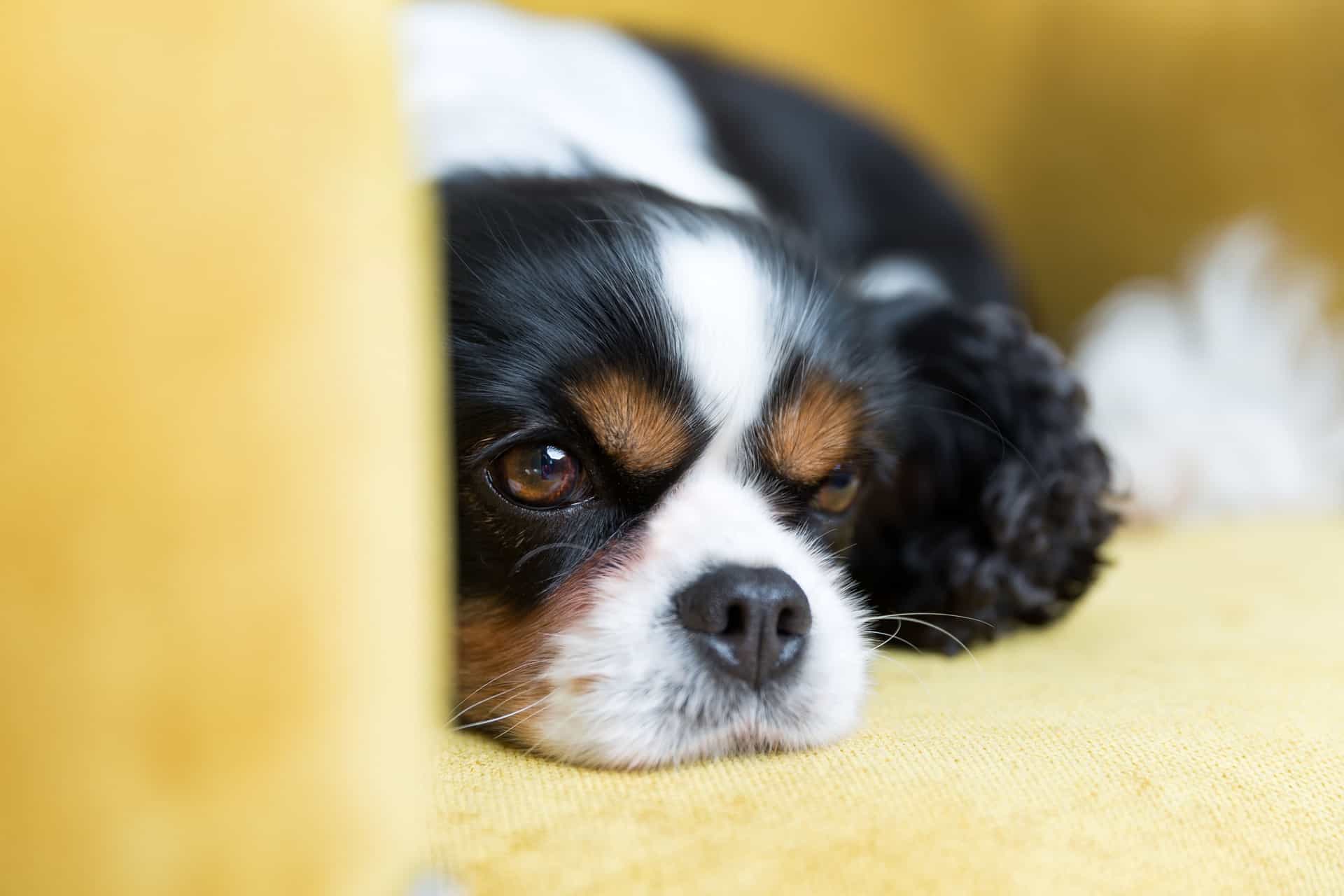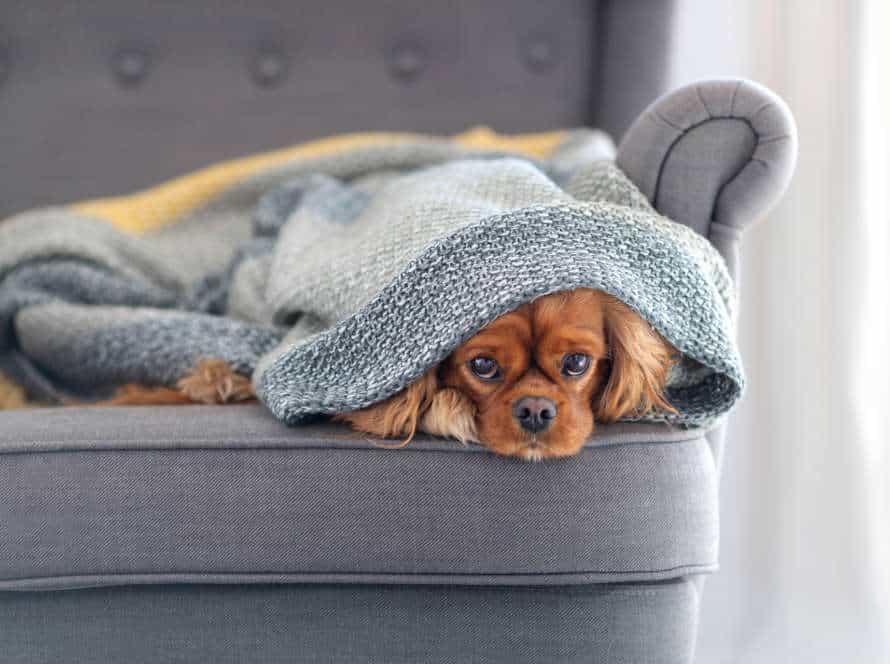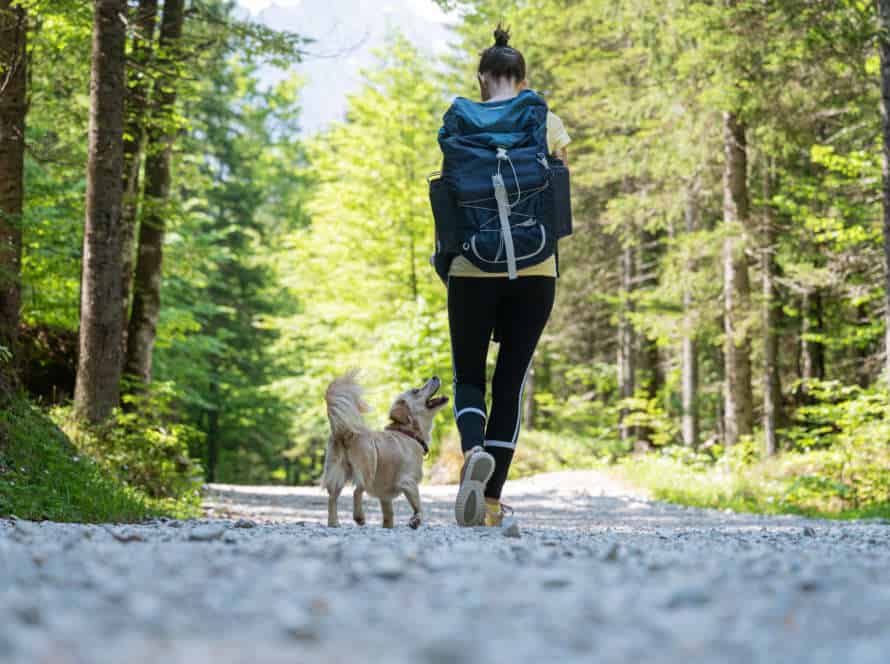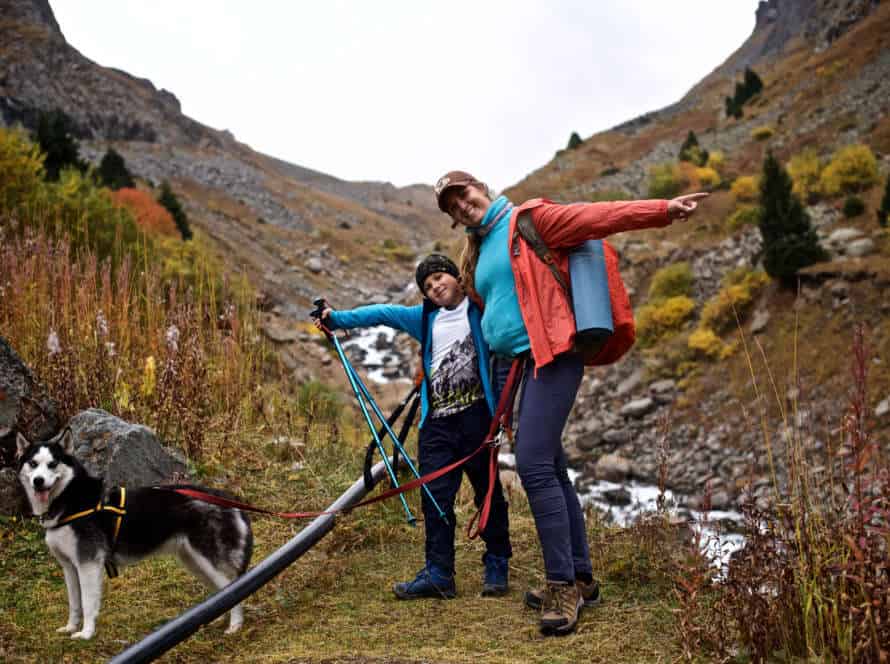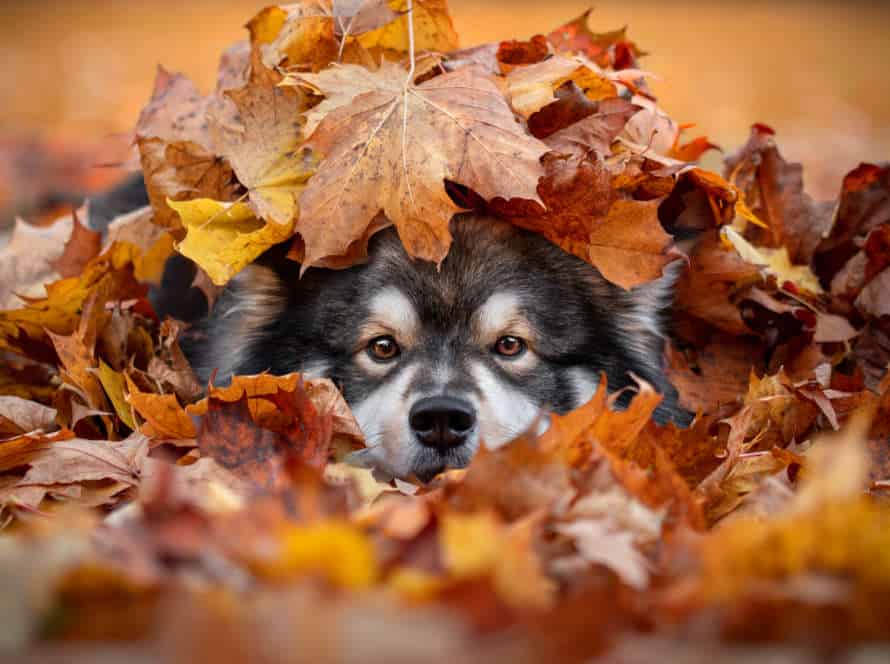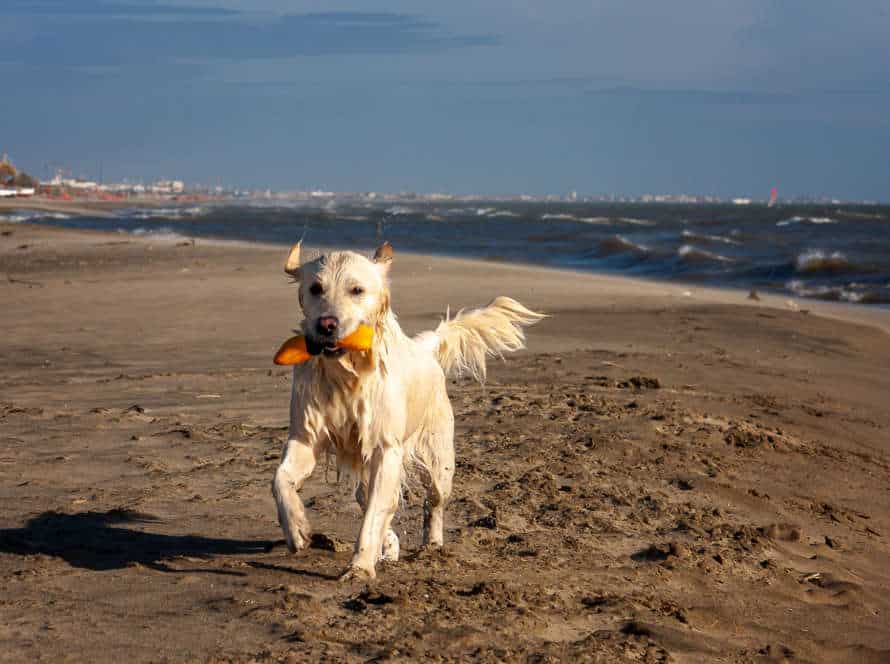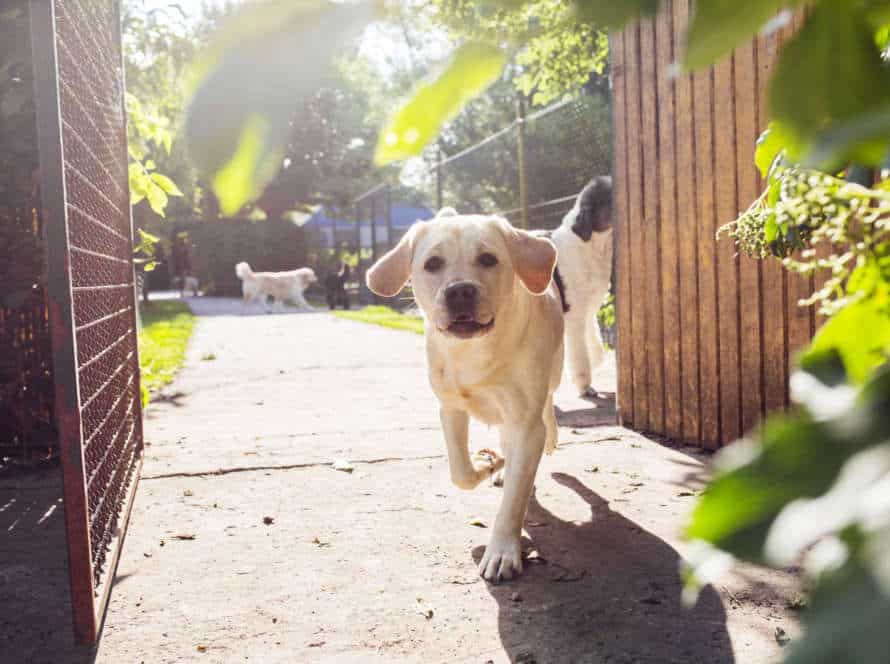Helping Your Fearful Dog Navigate the World
Having a fearful pup can be a challenge. But, there are ways to help them feel safe. Here are some tips:
- Identify triggers. See what makes them scared. Then, introduce the stimulus slowly and positively.
- Counter-conditioning. Use positive reinforcement to make them think of it as something good.
- Be patient. It takes time, patience, and consistency. Rushing won’t help.
- Consult a pro. If the fear is bad, talk to a vet or behaviourist.
Remember: helping a scared pup takes time. With love and positivity, they’ll learn to feel safe.
Understanding Fearful Dogs
Fear is natural for dogs. They have a response when they feel something is new or dangerous. Fear has levels. Knowing the signs of fear in your dog helps them understand the world. Identify these signs, like increased heart rate, trembling or cowering. Knowing these helps you to better understand and aid your dog.
Signs of a fearful dog
Fearful dogs can show signs in various ways. It’s important to understand these cues. Here’s what to watch out for:
- Shaking, trembling, or pacing
- Excessive panting or drooling
- Hiding or finding a place to retreat
- Yawning or lip licking often
- Excessive barking or growling
- Avoiding eye contact or cowering
- Tail tucked between the legs
- Raised fur or ears flat against head
- Fear aggression (snapping or biting)
It’s essential to begin training and socializing your fearful dog early. Positive reinforcement, desensitization, and counter-conditioning can help reduce anxiety and build confidence.
Pro tip: Always get professional help from an experienced dog trainer or behaviorist to manage fear and anxiety.
Causes of fearful behavior in dogs
Fear in dogs can have many causes, such as genetics, or traumatic experiences. Some of the common ones are:
- Lack of socialization during puppyhood (3-14 weeks).
- Trauma or abuse they’ve been exposed to.
- Genetics of certain breeds.
- Medical conditions like pain, hearing loss, or vision loss.
- Bad experiences with particular people or animals.
Pro tip: If your dog’s fearful, act fast. Seek professional help from a dog trainer or behaviorist. With proper guidance, fearful dogs can learn to have confidence and feel comfortable.
The importance of early socialization for fearful dogs
Early socialization is key for dogs who are scared. If they don’t get exposed to new things during the critical socialization period, they may become overwhelmed. Here’s why early socialization is so important:
- Prevents behavior issues like aggression, separation anxiety, and destructiveness.
- Builds their confidence.
- Improves their social skills, like how to greet people and interact with other dogs.
- Makes training easier.
Pro tip: Speak to a professional trainer or behaviorist if you have a scared pup. They’ll help you come up with a safe plan for socialization.
Creating a Safe and Calm Environment
When your dog fears, initial step: build a secure and tranquil atmosphere. Utilize body language, sounds, visuals, aromas, and even lighting to do this. By creating a setting where your pup feels secure, you can teach them healthy strategies to manage their anxieties.
Here are more ideas to make a peaceful setting for your scared dog:
Designing an appropriate safe space for your pet
Creating a secure zone for your beloved pet is key for their overall well-being. This is especially true for scared dogs who need a peaceful environment to flourish. So, here are some tips for crafting an ideal safe space for your furry pal:
- Choose a calm room or corner for your pet to relax. It should be away from places with lots of noise.
- Add comfy bedding such as a bed or crate for them to hide away.
- Include familiar toys and blankets to feel secure.
- Play soothing music or white noise to decrease stress.
- Make sure the room has no hazardous materials that they could ingest.
- Plus, give positive reinforcement when they enter their safe space. With patience and consistency, your pet will learn to associate it with safety and serenity. Pro tip: A safe space is especially important for anxious pets. A bit of effort can help your furry one feel more secure and at ease.
Creating a comfortable living environment
Making a safe and quiet space is key for your scared pup to explore the world. Here are some helpful hints to make a cozy spot for your pooch:
- Establish a regular schedule: Canines do well with a consistent, predictable pattern which makes them feel safe.
- Give them a soft area: Having a comfy bed or kennel can give your pup a sense of security.
- Utilize calming aromas: Using essential oils or pheromone sprays can comfort your pup and create a peaceful atmosphere.
- Designate a safe zone: Set aside an area in your home for your pup to go to when feeling anxious.
- Use positive encouragement: Reward your pup for relaxed behavior to create happy memories and help them stay comfortable.
Addressing sources of stress in your dog’s everyday life
Creating a secure and peaceful atmosphere for your pup is critical to address sources of tension that your furry mate may experience in their daily life. Fearful behavior in dogs is frequent and could result from many causes like heredity, shock, or lack of socialization. Here are some tips to help your anxious dog explore the world:
- Construct a safe and comfy area for your pup to withdraw to.
- Supply calming fragrances and tunes such as lavender and classical music to diminish nervousness.
- Use positive reinforcement training to construct your pup’s self-confidence and craft a predictable routine for them.
- Pinpoint triggers and step by step expose your pup to them within a monitored and secure setting.
- Ask for expert help from a vet or a qualified dog behaviorist to tackle deeply embedded fears that your pup may have. Pro Tip: Bear in mind that every dog is exclusive, and it might take time, persistence, and love to assist them in overcoming their fears. By constructing a secure and tranquil atmosphere and looking for professional help when necessary, you can help your furry friend explore the world with assurance and ease.
Training and Behavior Modification Techniques
Fearful responses in dogs can differ. It depends on the circumstance and the pup.
Training and behaviour modification techniques can help your fearful dog cope with the world. These techniques involve exposing your pup gradually to what they are scared of and teaching them the world isn’t scary.
Let’s see some of the ways you can use behaviour modification to help your fearful pup.
Positive reinforcement training techniques for fearful dogs
Positive reinforcement training is a great way to help fearful dogs. It rewards good behavior and avoids punishment. Here are some tips:
- Desensitize them: Gradually introduce them to what makes them scared and reward them for staying calm.
- Counter condition: Connect the scary stimuli with something positive like treats or playtime.
- Clicker training: Use a clicker to mark good behavior and reward them with treats or praise.
- Target training: Teach them to touch something with their nose. Reward them for doing it.
Positive reinforcement training helps fearful dogs feel more comfortable and confident in the world.
Desensitization and counterconditioning strategies
Desensitization and counterconditioning are two techniques to help fearful dogs. They can overcome fears and feel more confident.
Desensitization involves exposing the dog slowly to the trigger, while rewarding calmness. Counterconditioning changes the dog’s reaction to the trigger from fear to a positive one. Do this by pairing it with something enjoyable.
These tips can help:
- Start low intensity and increase as dog becomes used to it.
- Reward calm behaviour with treats or play.
- Be patient and consistent. It may take several sessions.
Desensitization and counterconditioning help fearful dogs become more confident.
How to work with a professional dog trainer to modify fearful behavior
Employing a pro dog instructor is an amazing way to change fearful behavior in pooches. Here’s what to do:
- Research and pick an expert who specializes in treating fear.
- Talk about your pup’s behavior and issues with the instructor.
- Create a training plan with the trainer that helps your dog manage their fears.
- Utilize the plan with consistent, positive reinforcement techniques.
- Record your dog’s progress and modify the plan as needed.
- Have patience, gentleness, and persistence in aiding your pup explore the world.
With a skilled doggo teacher and some patience, your scared pup can learn to conquer their fears and have a better life.
Alternative Therapies and Medications
When tending to a scared pooch, don’t just rely on traditional vet care – there are other treatments and medicines that can be used! These approaches often work wonders in improving your pup’s mental, emotional and physical wellbeing, compared to traditional methods. Read on for some alternative therapies and medications that could help your fearful doggo!
Natural remedies for reducing stress and anxiety in dogs
Stress and anxiety can be really tough on dogs, just like it is with humans. Fortunately, there are natural remedies that can help ease the burden.
- Exercise and playtime can be beneficial for reducing stress and anxiety, like it does for humans.
- Massaging your pup can reduce muscle tension and promote relaxation.
- Music therapy can soothe their nerves, and CBD oil can interact with their endocannabinoid system to promote relaxation.
- Chamomile, passionflower, and valerian root are some herbal remedies that can help calm dogs and reduce anxiety.
It’s important to get approval from your veterinarian before administering natural remedies to your pup.
Prescription medications for fearful dogs
Prescription meds can help dogs with fear and anxiety, but there are also other therapies and meds to help your pup.
Examples include:
- CBD Oil: From hemp plants, this non-psychoactive compound can reduce anxiety and promote relaxation.
- Adaptil: Synthetic version of the dog’s natural pheromone, which can reduce anxiety in stressful situations.
- Bach Flower Remedies: Gentle, natural remedies to help dogs cope with fear and anxiety.
Check with your vet before giving anything to your dog. They can recommend the best treatment for your pup’s individual needs.
Pro Tip: Along with meds, provide your dog a safe and comfy environment, positive reinforcement, and regular exercise. That’s part of their anxiety management plan.
Potential side effects of medications and how to monitor your dog’s response
Medications can help fearful dogs, but they can also have side effects. It’s important to know these and keep a close eye on your pup. Here are some common ones to watch for:
- Lethargy or hyperactivity.
- Increased anxiety or aggression.
- Excessive drooling or panting.
- Loss of appetite or thirst changes.
- Diarrhea or vomiting.
If you see any of these, contact your vet right away. They may suggest changing the dosage or switching meds. Talk to your vet regularly and keep them up to date about your dog’s response to their meds. That way, your pup can be safe and comfortable in the world.
Long-term Strategies for Managing Fearful Behavior
Dealing with scared dogs can be hard. But, there are tactics that can help over time. Remember, it’s important to cater to your canine’s individual reactions. All animals are special! So, let’s discover some strategies for long-term management of a fearful pup.
How to monitor progress and maintain gains over time
Keeping gains over time when helping scared pooches tackle the world is possible by watching their progress and adjusting their training plan. Here’s how to keep an eye on progress and maintain gains:
- Log your pup’s behavior in a journal or spreadsheet. This will help you spot trends and observe changes over time.
- Test your pup’s behavior in different places and situations. Gradually let them explore new experiences and settings. See how they react and modify their training accordingly.
- Engage a professional trainer or behaviorist who can craft a personalized training plan and give support and advice.
- Be patient and stay consistent. Fearful behavior takes time and work to address, and improvement is not always clear-cut. Follow the plan and celebrate small successes along the way.
Reminder: Every pup is unique, and progress will differ. Have faith in the process and carry on working towards helping your cuddly companion maneuver the world with assurance.
Coping strategies for common triggers
When you tackle the triggers that make your pup scared, long-term methods can help them to take on the world with less stress. Here are some ideas to help:
- Loud Noises: Play soothing music or put a blanket over their crate to create a peaceful atmosphere.
- Separation Anxiety: Show your dog how to be independent gradually. Leave them alone for short periods of time and give them a treat when you come back.
- Strangers: Go to obedience classes to let your dog meet people in a controlled environment. As well, train them to come to you when they’re called, and reward them when they do.
- New Environments: Take your pup to different places to get them used to it. Expose them to new sights and smells bit by bit, and praise them for good behaviour.
Pro Tip- To manage fearful behaviour in canines, consistency and patience are essential. Remember that dogs learn routines if you keep up with them.
The benefit of ongoing training and socialization for fearful dogs
Training and socialization are key for fearful dogs. They need exposure to new things, people, and dogs to boost their confidence and reduce their fear. Here’s how they can help:
- Obedience skills can give them a sense of control and security.
- Exposing them to different things can desensitize them to fearful situations.
- Positive interactions with new people, dogs, and environments can give them confidence.
- Training can strengthen the bond between you and your dog and improve their overall behavior.
For the best results, get help from a professional dog trainer or behaviorist who has experience with fearful dogs, and make a personalized plan.
Pro Tip: Be patient and consistent with your training – progress can take time, but it will benefit your pet!
Frequently Asked Questions
Q: How can I help my fearful dog cope with new situations?
A: Gradual exposure and positive reinforcement training can help your dog gradually become more comfortable with new situations. Start with low-stress situations and work your way up.
Q: Can medication help my dog’s fear?
A: Medication can be helpful in some cases, but it’s best to consult with a veterinarian to determine if it’s the right option for your dog and what type of medication would be most helpful.
Q: Is it possible to fully “cure” my dog’s fear?
A: While it’s unlikely that your dog will completely overcome their fear, it is possible for them to learn to manage it and become more comfortable in different situations.
Q: Should I punish my dog for exhibiting fearful behaviors?
A: No, punishing your dog will only make their fear worse. Instead, focus on positive reinforcement and rewarding your dog for calm and relaxed behavior.
Q: Can my dog’s fear be genetic?
A: While there is evidence that some breeds are more prone to fear and anxiety, genetics is just one factor that contributes to a dog’s behavior. Early socialization and training can also have a significant impact.
Q: Can a professional trainer help my dog with their fear?
A: Yes, a professional trainer can provide guidance and support in helping your dog navigate their fear. Look for a trainer who has experience working with fearful dogs and uses positive reinforcement methods.

